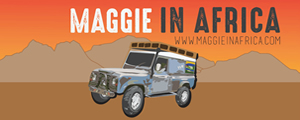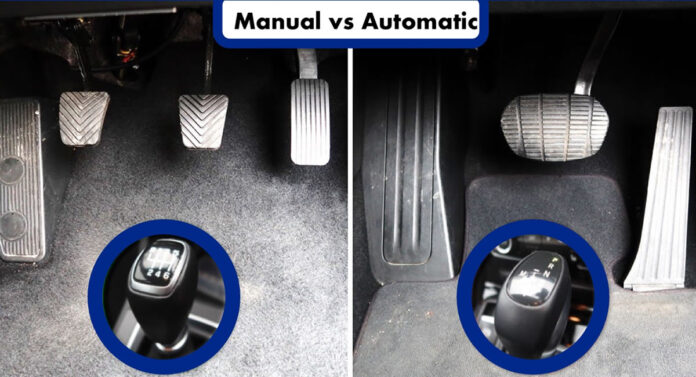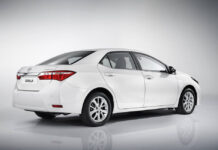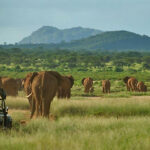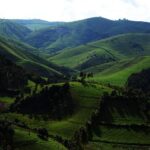When organizing a safari adventure, a significant decision involves selecting the appropriate vehicle. Safaris frequently require traversing rough, uneven, and at times unpredictable terrain, necessitating a vehicle that is both capable and dependable. A common inquiry among travelers is:
“Should I opt for a vehicle with an automatic or manual transmission for my safari?” and “Which type of transmission is more readily available from safari rental companies?”
This article delves into benefits, and considerations associated with manual and automatic transmissions in safari rentals, particularly with companies such as Self-Drive Uganda, Car Rental Tanzania, Car Rental Congo, Self Drive East Africa, and 4X4 Africa.
Understanding Manual and Automatic Transmission Vehicles
Prior to exploring availability and suggestions, it is beneficial to elucidate the primary distinctions:
Manual Transmission
Manual vehicles necessitate that the driver operate a clutch pedal and manually shift gears utilizing a gear stick. Operating a manual vehicle implies that you have control over the timing and method of gear changes, which depend on the terrain and speed.
Automatic Transmission
Automatic vehicles change gears on their own, eliminating the need for a clutch pedal, which makes driving easier. The driver typically only manages acceleration and braking.
The Current Landscape: Which Transmission Is More Common for Safari Rentals?
Manual Transmission (The Most Common in Safari Rentals)
In East and Central Africa, the safari rental market is predominantly occupied by manual transmission vehicles. Firms like Self-Drive Uganda, Car Rental Tanzania, and 4X4 Africa mainly provide manual 4×4 SUVs for rental purposes.
Here are several reasons why manual vehicles continue to be the most common choice:
Better Control on Tough Terrain: Numerous safari routes feature rugged, rocky, steep, or muddy landscapes. Manual transmissions enable drivers to have precise control over gear selection, which can be essential when traversing hills or difficult trails.
Fuel Efficiency: Manual vehicles generally consume less fuel compared to automatic ones, which is a significant benefit during extended safaris where fuel stations may be limited and fuel expenses can accumulate.
Lower Cost and Maintenance: Manual vehicles typically have a lower purchase price, maintenance costs, and repair expenses. Rental companies consider it financially advantageous to offer manual cars, resulting in greater availability for customers.
Reliability: Manual transmissions consist of fewer components compared to automatic ones, which reduces their likelihood of malfunctions—this is crucial when you find yourself far from assistance in the wilderness.
Availability of Spare Parts and Mechanics: In numerous African nations, mechanics possess greater expertise with manual vehicles, and locating parts is more straightforward. This practical situation reinforces the inclination towards manual vehicles in rental fleets.
Automatic Transmission (Growing but Still Less Common)
In recent years, there has been a consistent increase in the availability of automatic vehicles for safari rentals. This rise in demand is primarily driven by travelers from nations where automatic cars are the norm, as well as those who are not accustomed to manual transmissions.
In response, companies such as Self-Drive East Africa and Car Rental Congo have expanded their fleets by incorporating a greater number of automatic SUVs.
Why choose an automatic vehicle?
Ease of Driving: Automatic vehicles enable drivers to focus more on the road and the surroundings without the necessity of manually shifting gears. This feature alleviates driver fatigue, particularly during extended journeys or while traversing unfamiliar routes.
Comfort: Automatic transmissions facilitate smoother acceleration and gear shifting, resulting in a more comfortable driving experience.
Beginner-Friendly: For those who are inexperienced with driving or have not operated a manual transmission vehicle, automatic cars eliminate the challenges and anxiety associated with learning.
Despite these advantages, automatic safari vehicles remain less common and are typically more costly to rent compared to manual ones.
Specific Examples of Transmission Availability with Leading Safari Rental Companies
Self Drive Uganda: Renowned for its extensive collection of manual 4×4 vehicles, including Toyota Land Cruisers and Land Rovers, the company also provides automatic SUVs like the Toyota Prado, Hillux and Ford Everest upon request.
Car Rental Tanzania: Provides a combination of options, predominantly favoring manual vehicles. However, there are some automatic choices available for well-known models such as the Toyota Land Cruiser Prado and the Nissan Patrol.
Car Rental Congo: Primarily, vehicles with manual transmissions are prevalent, indicating the preferences of the local market and the requirements of the terrain. In urban regions and tourist centres, the presence of automatic vehicles is gradually on the rise.
Self Drive East Africa: Provides a well-rounded fleet featuring an expanding selection of automatic vehicles, aimed at international travellers who favour automatic transmissions.
4X4 Africa: Possesses an extensive network throughout East Africa, providing both manual and automatic 4×4 vehicles. They offer professional guidance on selecting the appropriate transmission based on your travel plans and level of experience.
Key Advantages and Disadvantages of Each Transmission Type for Safaris
Manual Transmission Advantages:
- Accurate gear management, beneficial for steep inclines, river crossings, and irregular surfaces.
- Typically more cost-effective to rent and sustain.
- Improved fuel efficiency in numerous models.
- More accessible in rural and isolated regions.
- Simpler to fix and maintain due to the availability of parts.
Manual Transmission Disadvantages:
- Driving long distances can be exhausting, particularly in heavy traffic or on uneven terrain.
- It necessitates skill and experience for smooth operation.
- For travellers who are not accustomed to manual vehicles, it can be a source of stress.
Automatic Transmission Advantages:
- Simpler to operate, particularly for novice drivers.
- Reduced driver fatigue during extended journeys.
- Seamless gear shifts enhance comfort.
- Enables greater focus on observing wildlife and appreciating the landscape.
- Favoured by tourists from nations where automatic transmissions are the norm.
Automatic Transmission Disadvantages:
- Higher rental costs.
- Marginally reduced fuel efficiency.
- Limited availability in remote or rural regions.
- Repairs can be expensive and complex if issues arise.
- Certain automatic vehicles may lack complete manual control options, which diminishes precision in challenging terrains.
What Should You Consider When Choosing Between Manual and Automatic?
Your Driving Experience and Comfort
If you possess extensive experience with manual transmission vehicles and feel assured when navigating difficult terrains, a manual vehicle might be the most suitable option for you. However, if you are more familiar with automatic vehicles or feel apprehensive about manual gear shifting, opting for an automatic rental vehicle will provide you with greater peace of mind.
Your Safari Route and Terrain
If your travel plans primarily consist of paved roads and gentle landscapes (such as a luxury lodge safari), an automatic vehicle might offer more comfort. However, for more adventurous paths that include national parks with rugged trails, such as Queen Elizabeth National Park or Virunga National Park, manual vehicles offer enhanced control.
Availability and Budget
Automatic 4×4 vehicles typically carry a higher price tag and may have limited availability, therefore it is advisable to make reservations in advance. In contrast, manual vehicles are more readily available and usually less expensive, providing greater flexibility for those looking to minimize expenses.
Duration of Your Safari
For brief journeys or city excursions, automatic transmissions can simplify the driving experience. For extended travels where you will be driving for several hours, reflect on whether you prefer the enhanced control of a manual transmission or the convenience of an automatic.
How to Book Your Safari Vehicle with the Right Transmission
When making a reservation with companies such as Self-Drive Uganda, Car Rental Tanzania, or 4X4 Africa, it is crucial to:
Specify Your Transmission Preference Early: Certain fleets have restrictions, therefore, please verify that your preferred transmission type is accessible for your selected dates.
Ask About Models and Features: Certain automatic SUVs are equipped with sophisticated off-road capabilities, such as hill descent control, which can assist in driving during a safari.
Check Insurance and Policies: Please verify if there are any differences in the rental conditions for manual and automatic vehicles, particularly in terms of driver eligibility and deposit requirements.
Consider Additional Equipment: Numerous companies offer rental services for camping equipment and GPS devices that enhance your vehicle selection.
Conclusion
Ultimately, the decision is influenced by your comfort level, budget, and travel itinerary. Manual transmission vehicles remain the most prevalent choice for safari rentals throughout East and Central Africa, owing to their durability, fuel efficiency, and cost-effectiveness. They provide exceptional control over the diverse terrains found in parks such as Serengeti, Maasai Mara, and Bwindi.
Conversely, automatic vehicles are increasingly popular as rental companies acknowledge the necessity to accommodate international travellers seeking a more straightforward driving experience. Automatics minimize fatigue and offer a smoother ride, making them particularly suitable for first-time safari drivers or those navigating routes with a higher proportion of paved roads.
When renting from companies like Self Drive Uganda, Car Rental Tanzania, Car Rental Congo, Self Drive East Africa, or 4X4 Africa, it is essential to communicate your requirements clearly. Their expertise will assist you in selecting the most appropriate transmission option for a safe, comfortable, and memorable safari experience.
